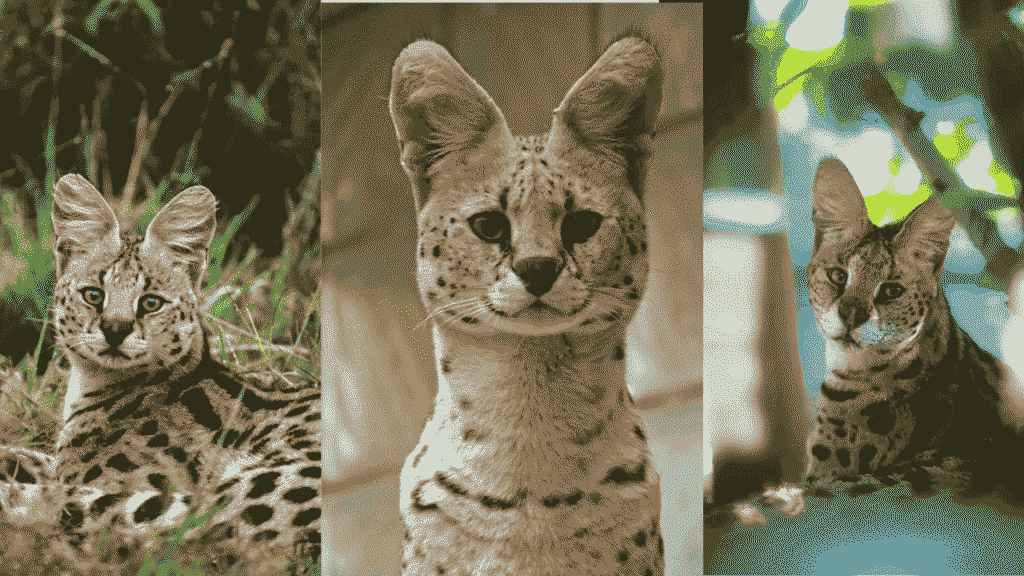Graceful and highly skilled hunters, servals are medium-sized wild cats that thrive in the diverse landscapes of sub-Saharan Africa. Their dietary habits are as fascinating as their physical attributes, providing essential insights into their survival in the wild. In this article, we explore the feeding habits of servals, detailing how much they eat daily, the factors influencing their food intake, and the nutritional needs crucial for their survival.
Understanding the Serval’s Diet in the Wild
Servals are carnivorous animals with a diet that mainly consists of small prey.with their elongated legs and sharp hearing they excel as hunters, skillfully catching even the most elusive of prey. In the wild, servals consume approximately 1 to 1.5 kilograms (2.2 to 3.3 pounds) of food per day. However, this figure can vary based on factors such as availability of prey, environmental conditions, and the serval’s age, size, and activity levels.
What Do Servals Eat?
The diet of a serval typically includes:
- Rodents: These are the primary source of food for servals, accounting for up to 80% of their diet.
- Birds: Servals often hunt small to medium-sized birds.
- Reptiles and Amphibians: Frogs, lizards, and occasionally small snakes are included.
- Insects: Grasshoppers and beetles serve as supplementary food sources.
- Fish: In areas near water bodies, servals are known to catch and consume fish.
Their ability to adapt to varying environments allows them to exploit different prey sources depending on their habitat.
Hunting Behavior and Energy Expenditure
Servals are solitary hunters, primarily active during dawn and dusk, aligning their activity with the behavior of their prey. On average, a serval’s hunting success rate is remarkably high—about 50%, compared to other wild cats’ success rates of 10-20%. This efficiency ensures they meet their daily caloric needs despite the challenges of finding prey.

How Do Servals Hunt?
The serval employs several unique hunting techniques:
- Leap-and-pounce method: Servals use their strong legs to leap as high as 3 meters (9.8 feet) to catch flying birds or pounce on prey hidden in tall grass.
- Listening for prey: Their large ears help detect the slightest rustle, enabling them to locate prey with precision.
- Patience and stealth: Servals can wait quietly for extended periods before striking at the right moment.
This energy-intensive hunting style requires them to consume a significant amount of food to replenish their energy reserves.
Factors Influencing the Serval’s Daily Food Intake
The amount of food a serval eats daily is influenced by various factors:
1. Habitat and Prey Availability
In areas abundant with prey, servals may consume more food, while in regions with scarce resources, they might eat less and rely on fat reserves during lean periods.
2. Age and Physical Condition
Younger servals or those in their prime require more food to support their growth and high activity levels. Older or injured servals may eat less due to reduced mobility and energy requirements.
3. Seasonal Variations
During the wet season, prey like frogs and birds are more plentiful, allowing servals to eat more. In the dry season, they might have to expend more energy searching for food, leading to variations in their daily intake.
4. Captivity vs. Wild
Servals in captivity are typically provided with a controlled diet that mimics their natural intake, often consisting of raw meat, supplemented with vitamins and minerals. Captive servals generally eat around 1.2 to 1.5 kilograms (2.6 to 3.3 pounds) per day, depending on their size and activity level.
Nutritional Needs of Servals
servals need a high-protein, high-fat diet to sustain their health and energy. Essential nutrients in their diet include:

- Taurine: Vital for vision and heart function.
- Calcium and Phosphorus: Important for bone health.
- Omega Fatty Acids: are essential for promoting vibrant skin and a shiny, healthy coat.
A lack of these nutrients can lead to health issues such as poor coat condition, weakened immune systems, and even organ failure.
How Servals Adapt to Food Scarcity
When prey is scarce, servals exhibit remarkable adaptability. They can survive for days without food by reducing their activity levels and relying on stored fat reserves. Their hunting strategy may also shift, focusing on smaller, easier-to-capture prey like insects or scavenging when necessary.
How to Care for a Serval’s Dietary Needs in Captivity
Servals are occasionally kept as exotic pets, although this practice is controversial due to their wild nature and specific needs. Proper care involves providing a diet that mirrors their natural intake:
- Raw meat diet: This should include chicken, turkey, and other lean meats.
- Supplements: Taurine, calcium, and multivitamins are essential for their health.
- Hydration: Fresh water must always be available.
Owners must also ensure servals receive adequate exercise to mimic their active lifestyle in the wild.
Conclusion
Understanding the dietary habits of servals is key to appreciating their role in the ecosystem. Their daily food intake, influenced by factors such as prey availability, age, and habitat, highlights their adaptability and resourcefulness as predators. Whether in the wild or captivity, meeting their nutritional needs ensures their health and survival.
# : if you want to more information of this topic to click here see more
# : READ ANOTHER POSTS
1 : Why Do Bengal Cats Have Spots
2 : Why Is My Cat Not Gaining Weight? Causes, Solutions, and Essential Tips
3 : Can Cats Shed Their Claws? Understanding Feline Claw Health


